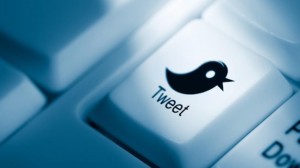Twitter User Guide For Brands
For a brand, having a successful Twitter presence is like having your stand noticed at an overcrowded trade show, you have to work for your customers’ attention and you have to work even harder to retain it.
According to research from eMarketer, the social media marketing space was predicted to approach saturation by the end of 2012, with 88% of companies with more than 100 employees set to use social networks for marketing.

However, it’s clear that only a minimal number of brands are managing to hit the mark with social media by identifying the benefits of Twitter and maximising its potential. "Most big brands are still using Twitter as a publishing channel rather than an engagement channel," says Saif Ajani, Sling Digital’s co-founder.
What he is saying here is that brands are seeing Twitter as a one-way channel for brand awareness; using it the same way that they would any other traditional advertising medium like TV, print or even other digital platforms around the web. However, they should be using it the same way they do a telephone or email - to communicate on a more personal level with their customers and responding to queries promptly or in real time.
Brands don't seem to be actively pursuing new customer interactions with their Twitter accounts either. They're mostly interacting with the customers who are already engaging with them, whereas they should be using these conversations to connect with people who aren’t engaging. One well-used strategy is to act as a people connector - in real life and on social networks. When you connect people with each other, followers take notice and your brand’s credibility increases, creating sincere motivation for further engagement. People are looking for better, faster and more personalised means of communicating with brands. Research from Gartner in late 2012 forecasted that social networks will become a primary form of customer communication by 2014 and will be viewed as the minimum form of response.
This is hardly surprising when ample research from another source states that Twitter is 400% more effective at engaging consumers than Facebook. So why aren’t more brands already using Twitter to engage consumers? Sling Digital’s research analysed the Twitter activity of all Fortune 100 companies active on Twitter with at least 50,000 followers. They found, with a few exceptions, that the brands who had more followers, received less engagement. The problem seems to be that brands aren't doing the right research around how to use Twitter properly. Therefore ROIs are lower than they should be, giving brands who aren’t yet using Twitter, a poor indication of Twitter’s true potential. There are a number of factors which brands should be taking into consideration when using Twitter to communicate with customers, and they are really quite straightforward .
For example, research suggests that weekends and non-busy hours are the best times to reach your customers with tweets. A notable statement due to the way the micro-blogging site works; with millions of tweets straining through the pipeline in real-time, everyday, your tweet has limited time to reach an audience before it slides below the screen and is lost in the black hole of old tweets forever. Some more basic but useful tips about tweeting are around the length of your tweets, the use of hashtags, using links and giving followers a reason to retweet.
-
The shorter your tweet, the more likely people are to take note of it. Not only this, but if people want to quote you in their own tweet, it gives them more space to add their message.
-
Hashtags are another good engagement driver, yet bizarrely they are often both underused and also overused. Keep your hashtags simple - one or two is enough. More than that not only looks messy but research has determined that it will decrease engagement with your brand.
-
Using links and images are a great way to engage your followers. Offering a clever, engaging statement accompanied by a quick link or image is a sure way to increase user click-through to learn more. It’s not about making people read or see more, it’s about making people want to read or see more.
-
And finally, retweets. Retweets are a great example of free, yet well earned advertising. Say things in your tweets that people will want to share and don’t be afraid to ask your followers to retweet you. People are generally lazy and need a call to action before they will do you any favours.
At IT Pie, we deliver bespoke marketing solutions, combining a very select number of marketing tools which will have the most effect on your business and its goals, from Social Media marketing to PR, Pay Per Click advertising and off-site Search Engine Optimisation. For more information on what we do, click here. Original article by SocialMediaToday.